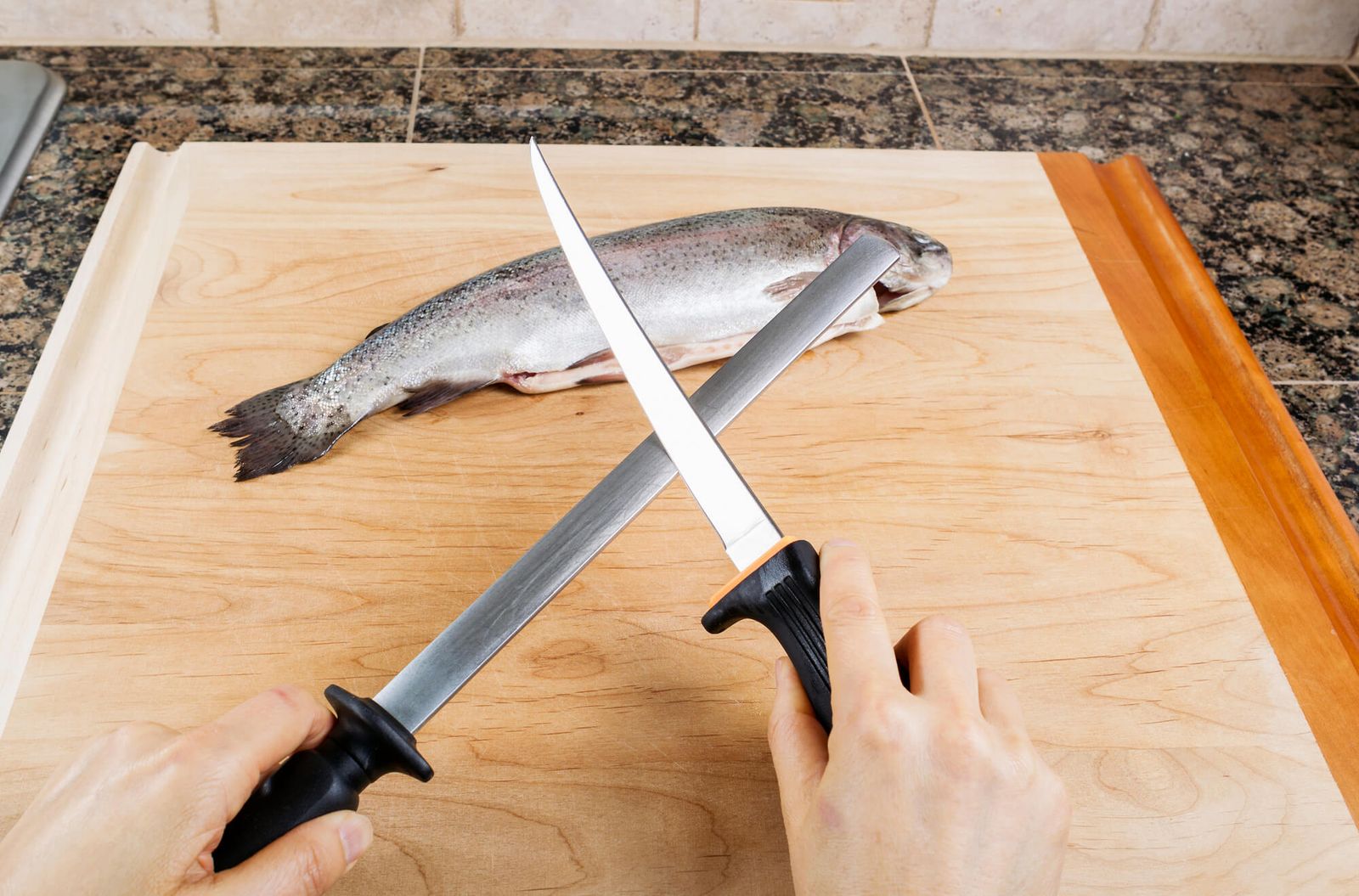A fillet knife is an indispensable tool in the kitchen, especially when preparing fish and delicate cuts of meat. Proper maintenance and regular sharpening are key to ensure your fillet knife stays in optimal condition and serves you well for years to come.
In this micro-post, we will provide step-by-step instructions on maintaining and sharpening your fillet knife effectively. By following these guidelines, you'll not only prolong the lifespan of your knife but also ensure its peak performance, making every culinary endeavor a breeze.
The Importance of Maintenance
Maintaining your fillet knife is crucial for several reasons.
Firstly, regular maintenance helps prevent the blade from rusting or corroding, preserving its functionality and appearance.
Secondly, proper cleaning and storage practices minimize the risk of bacterial contamination, ensuring hygienic food preparation.
Lastly, well-maintained knives are safer to use, reducing the chances of accidents during slicing and dicing. By dedicating a little time to maintenance, you'll reap the rewards of a durable, clean, and safe fillet knife.
Cleaning Your Fillet Knife
Cleaning your fillet knife after each use is essential for maintaining its longevity.
Start by rinsing the blade under warm water to remove any food residue. Avoid using abrasive sponges or harsh detergents that could damage the blade. Instead, gently wipe the blade and handle using a mild dish soap and a soft cloth or sponge.
Pay extra attention to the handle, as it can harbor bacteria. Once cleaned, thoroughly dry the knife to prevent moisture buildup and potential rusting.
Remember, never leave your fillet knife soaking in water or exposed to high humidity.
Storage and Handling
Proper storage and handling of your fillet knife are crucial for maintaining its sharpness and protecting its edge. Consider using a knife block, magnetic strip, or sheath to protect your knife and prevent accidental cuts when storing your knife.
Avoid tossing your knife into a drawer with other utensils, as this can lead to blade damage and dullness.
Also, always carefully handle your fillet knife and avoid using it on hard surfaces like glass or metal cutting boards, as they can dull the blade. Instead, opt for gentle wooden or plastic cutting boards on the edge.
Sharpening Your Fillet Knife
Regular sharpening is essential for maintaining the cutting performance of your fillet knife. You can use various methods to sharpen your knife, such as sharpening stones or honing rods.
If your knife is dull, start with a coarse-grit sharpening stone and follow the manufacturer's instructions.
Hold the knife at a consistent angle and glide the blade across the stone in smooth, controlled motions. Repeat the process on both sides of the blade until you achieve the desired sharpness. For regular maintenance, honing your knife with a honing rod is often sufficient. Hold the rod vertically and run the blade along its length, applying light pressure. Repeat this process several times on each side of the blade.
Remember to clean the knife thoroughly after sharpening to remove any metal particles.
Tips for Longevity
To ensure your fillet knife lasts longer and performs at its best, consider these practical tips:
- Task-Specific Use: Only use your fillet knife for its intended purpose. Avoid tasks like prying open cans or cutting through bones, which can damage the blade.
- Hand Washing: Clean your knife by hand using mild soap and water. Dishwashers can be harsh on the blade and handle due to strong detergents and high temperatures.
- Regular Inspections: Check your knife regularly for any signs of wear, such as chips, cracks, or loose handles. Promptly repair or replace damaged knives to ensure safety and efficiency.
- Appropriate Cutting Boards: Use cutting boards that are gentle on knives, like those made of wood or plastic. This helps maintain the blade's sharpness and prevents unnecessary wear.
- Proper Storage: Store your knife in a dry, well-ventilated place to prevent rust and corrosion. Avoid damp or humid environments.
- Sharpening Tools: Invest in a good quality knife sharpener or honing system. Regular sharpening keeps the blade in top condition and makes cutting easier.
- Correct Cutting Techniques: Use proper techniques to reduce stress on the knife. Avoid twisting or bending the blade, which can lead to damage.
- Regular Oiling: Keep the blade and pivot area oiled to prevent rust and ensure smooth operation.
- Professional Sharpening: If you're not confident in sharpening the knife yourself or if it needs extensive reconditioning, seek professional sharpening services.
By following these guidelines, you can ensure that your fillet knife remains sharp, reliable, and ready to tackle any filleting task. Regular cleaning, proper storage, and routine sharpening will preserve the knife's functionality, hygiene, and overall quality. Remember, a well-maintained fillet knife is a valuable kitchen tool and a long-term investment in your cooking enjoyment.
Further Reading
- If you're looking to expand your culinary horizons and uncover innovative uses for your fillet knife, we invite you to explore our enlightening article on the versatility of fillet knives.
- If you need a new fillet knife or looking to upgrade your current one, be sure to check out our article on the best fillet knives for our top recommendations based on quality, performance, and customer reviews.
- For a deeper understanding of how a fillet knife differs from a boning knife, and to help you choose the right tool for your needs, be sure to explore our detailed comparison at Differences Between a Fillet Knife and a Boning Knife.
Thanks for reading!



